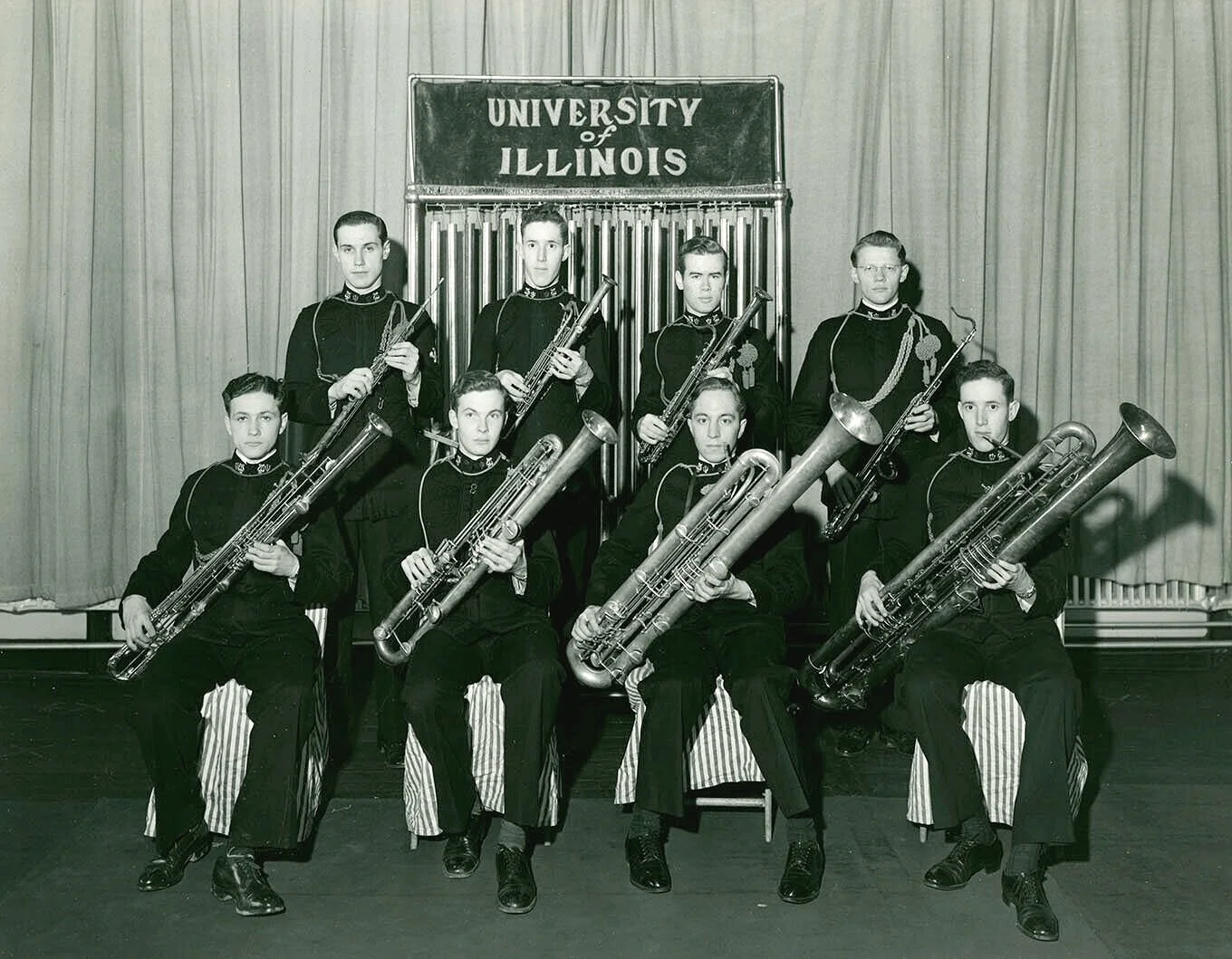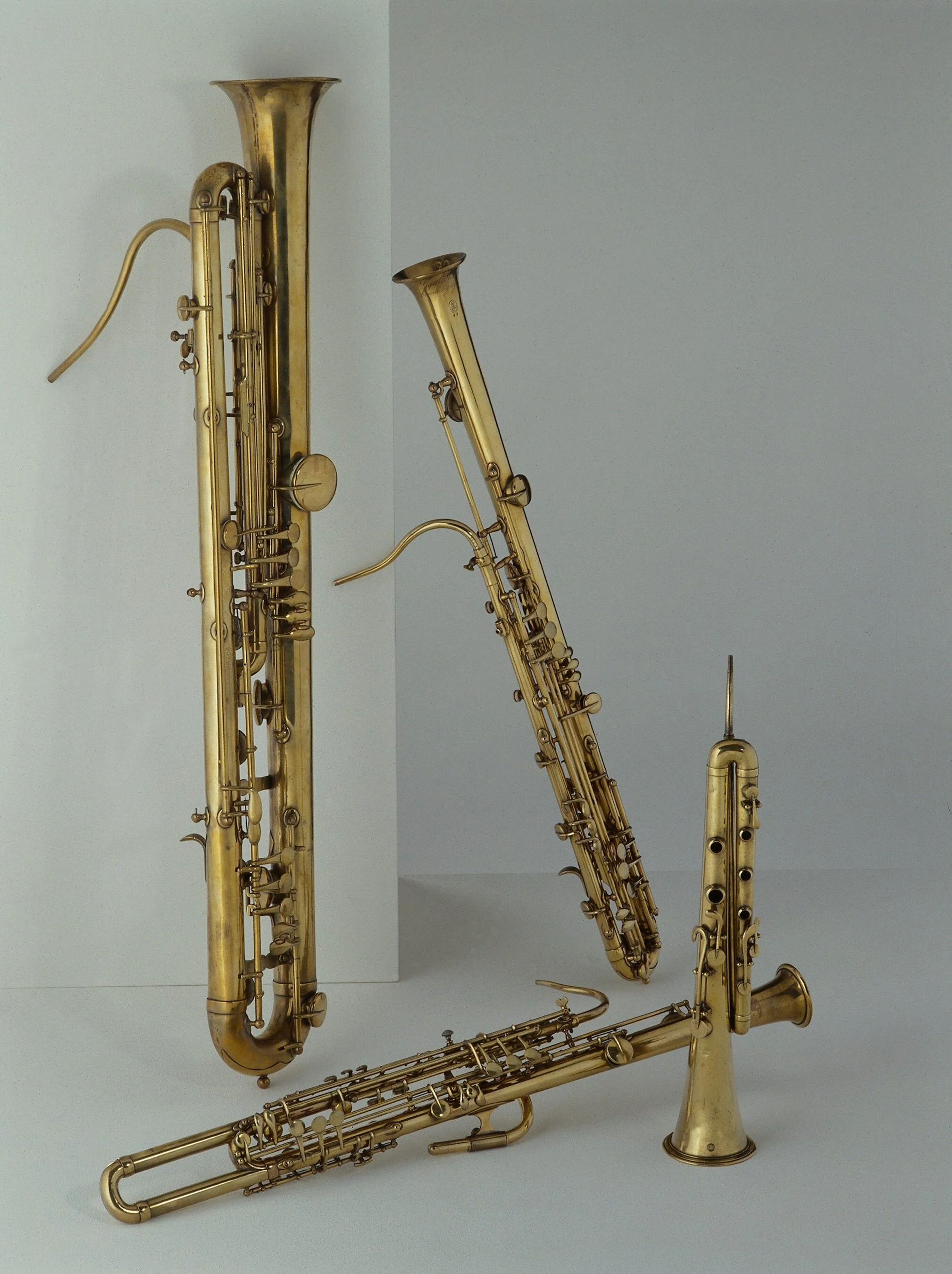A veritable behemoth of the woodwind family that stretches somewhere between bassoon and saxophone, this wonderful instrument makes a powerful sound dates back to mid-19th century France. It was patented and placed into production by Pierre-Louis Gautrot in 1856. The original designed as double-reed instruments like the oboe or bassoon, but with a metal body and a larger conical bore designed for louder volume for outdoor bands. Single-reed mouthpieces like those of the clarinet or saxophone were later developed for some of the bigger models. The instrument was named after the French bandmaster Pierre-Auguste Sarrus (1813–1876). The primary manufacturers have been the Orsi Instrument Company, Rampone (later Rampone & Cazzani), Buffet (Evette & Schaeffer), Conn, who only made the E-flat contrabass, Gautrot and Couesnon. They were built to be heard, loud and clear, with a distinctive sound.
Soprano, alto, tenor and bass sarrusophones
Like the saxophone, it comes in a family of sizes, and tunings, from the small E-flat sopranino, through soprano, alto, tenor, baritone, bass and then three contrabass beasts in E-flat, C, and B-flat.
But let’s get a blast of the one of the biggest of the family - a contrabass:
But the instrument can be surprisingly tender. Here’s player Richard Bobo with a couple of modern pieces.
In the classical genre, it’s a select instrument, but one of the the sarrusophones biggest fans was Polish composer Ignacy Paderewski, who featured last week in music featuring tonitruone, employing a thunder machine in his 1907 Symphony in B minor "Polonia", Op. 24. In this epically romantic, expansive and discursive piece harking back to Poland’s ‘glorious’ days before Russian occupation. For this orchestra, he threw in the full kitchen sink, including three sarrusophones, a tambour de Basque, a thunder sheet and an organ.
And here is a specific excerpt featuring the sarrusophone:
Then there’s a jollier piece specifically for the instrument – Michel Jolivet playing variations on a theme by Robert Schumann (William Davis) & Forty Fathoms by Harold L. Walters.
The sarrusophone was particularly popular around the turn of the 20th century, in pieces such as Paul Dukas using contrabass sarrusophone 1897 in his The Sorcerer's Apprentice of 1897; Maurice Ravel's Shéhérazade overture (1898), Rapsodie espagnole (1907) and L'heure espagnole (1907–09); Jules Massenet's Esclarmonde (1889), Visions (1891) and Suite parnassienne (1912); Claude Debussy's Jeux (1913), Lili Boulanger's Psalm 130 (1917) and Arrigo Boito's Nerone (1924). Igor Stravinsky included a part for contrabass sarrusophone in Threni.
Here’s The Sorcerer’s Apprentice, a wondrous piece later used for the surreal Disney cartoon of 1940. The sarrusophone takes a solo, but is sometimes replaced by a contrabass bassoon.
In marching band music, from Britain the France and Spain the instrument has made regular appearances, from pieces such as Over the Hills and Far Away by Percy Grainger with the E-flat contrabass, as well as the CJohn Philip Sousa band. Here’s the United States Marine Band playing Grainger:
It’s far less common in jazz, but in Clarence Williams' Blue Five, featuring Louis Armstrong and Sidney Bechet, on the tune Mandy, Make Up Your Mind, with Eva Taylor on vocals, Bechet plays the soprano sax and contrabass sarrusophone. Listen out for the lovely deep solo:
So then, any more sarrusophone examples blowing through your experience or music collection? Please feel free to share any further examples in songs, instrumentals, on albums, film, art or other contexts in comments below.
You can also get in touch the contact page, and also visit us on social media: Song Bar Twitter, Song Bar Facebook. Song Bar YouTube. and Song Bar Instagram. Please subscribe, follow and share. New to comment? It is quick and easy. You just need to login to Disqus once. All is explained in About/FAQs ...
Please make any donation to help keep Song Bar running:


